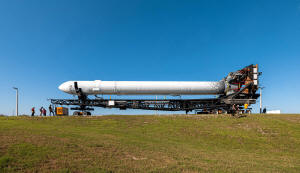|
The
California-based company's 110-foot tall Terran 1 rocket, which
is 85% made of 3D-printed parts, lifted off on its debut flight
around 11:25 p.m. EDT (0325 GMT on Thursday) from a launchpad at
Florida's Cape Canaveral Space Force Base.
Roughly 80 seconds into the flight at an altitude of nearly 10
miles (16 km) above the Atlantic ocean, the rocket reached peak
aerodynamic stress as it ascended toward space at 1,242 miles
per hour (1,999 km per hour), passing a key objective of the
test mission.
Upon reaching space, the rocket's second stage engine appeared
to briefly ignite but failed to achieve thrust, ultimately
failing to reach orbit.
"While we didn't make it all the way today, we gathered enough
data to show that flying 3D-printed rockets is possible,"
Relativity Test Program Manager Arwa Tizani Kelly said on the
company's live video stream.
(Reporting by Joey Roulette; Editing by Christopher Cushing and
Jamie Freed)
[© 2023 Thomson Reuters. All rights
reserved.] Copyright 2022 Reuters. All rights reserved. This material may not be published,
broadcast, rewritten or redistributed.
Thompson Reuters is solely responsible for this content.

|
|



